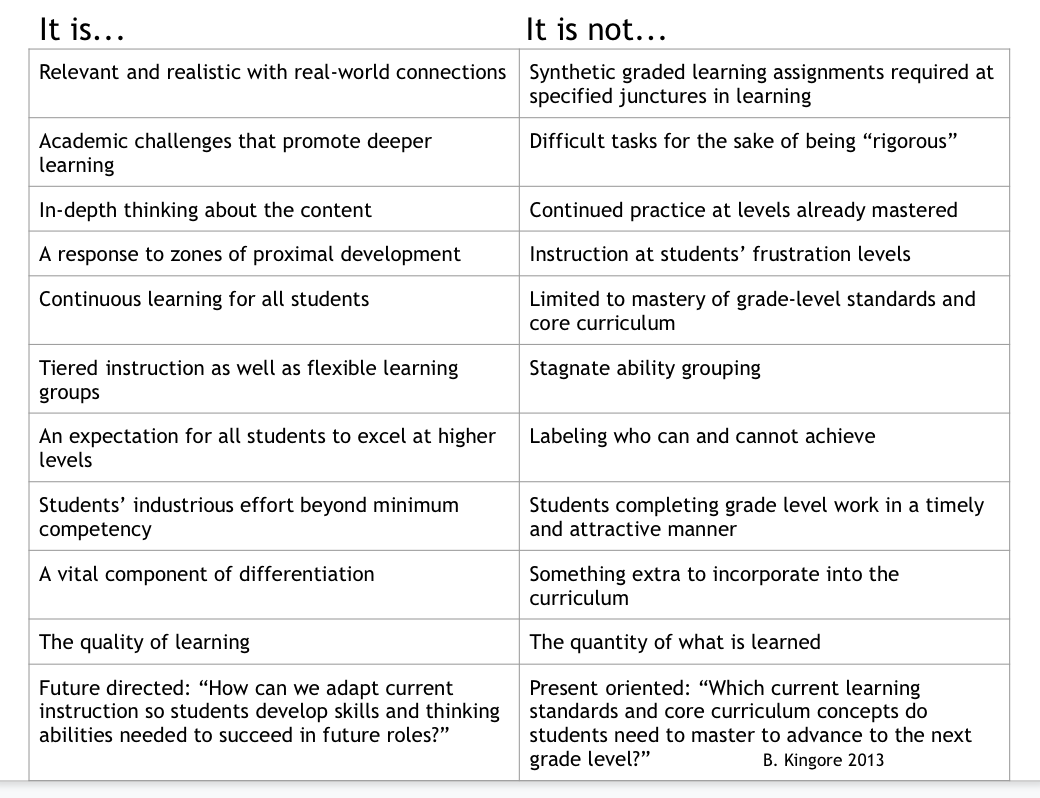Add content into this book. Differentiation! Depth & Complexity. Betts, Renzulli and other models of supporting giftedness. Keep it as a big picture and reference other GE courses. Balance the reality that this may be the only course participants take with it only being a 15 hour course and there are paths to go into more depth.
3. What is Rigor?
What is Rigor?
Things to remember as we begin to consider rigor for 2e students...
Their strengths vary
Their challenges vary
You need to get to know the child on a personal level
There are strategies for their gifts that will “sometimes” work
There are strategies for their challenges that will also “sometimes” work
The trick is finding what works for the individual child
Working to accommodate 2e students is not a one-size-fits all approach. There is not a recipe book. (We wish there were.)
So let's begin with defining what rigor is and is not:
Despite all the research, there are seven myths about rigor that are often heard. Let’s look at each, then turn our attention to the true meaning of rigor.
-
Lots of homework is a sign of rigor.
-
Rigor means doing more.
-
Rigor is not for everyone.
-
Providing support means lessening rigor.
-
Resources equal rigor.
-
Standards alone take care of rigor.
-
Rigor is just one more thing to do.
7 Myths About Rigor in the Classroom
What we also know about rigor is that it is....
For example: Compare and contrast the U.S. Civil War with a civil war in another country.
For example: How might the United States be different if the North hadn’t won the Civil War?
For example: How did the role of photography evolve during the Civil War and subsequent conflicts?
For example: Perhaps 20% of the soldiers who fought in the Civil War were 16 years old or younger. Why and how did they enlist, and how was their experience different from the older men who served?
For example: How did the abolition of slavery affect the subsequent Suffragette Movement?
For example: More than 150 years later, some say slavery still exists in parts of the United States. Do you agree with this statement? Support your answers with current examples.
Take a few minutes to review pages 57-70 in the Level 2 Twice Exceptional Handbook in which several strategies for rigor are addressed.

